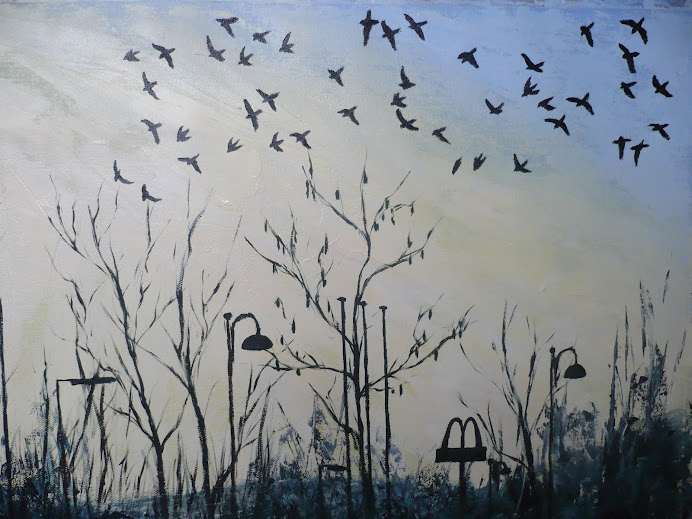 There was one more logistical problem with painting onto perspex; the acrylic paint was very easy to scrape off. This was a big problem because of the durability needed for a painting that would be sent through the post for assessment. The only solution that I could think of was to coat the perspex and acrylic paint with a layer of acrylic varnish, but this itself threw up a problem because it resulted in less transparency through the perspex.
There was one more logistical problem with painting onto perspex; the acrylic paint was very easy to scrape off. This was a big problem because of the durability needed for a painting that would be sent through the post for assessment. The only solution that I could think of was to coat the perspex and acrylic paint with a layer of acrylic varnish, but this itself threw up a problem because it resulted in less transparency through the perspex.
This photo on the left shows the small perspex study on the top, with an unpainted sheet of perspex sandwiched up against it underneath. The small study has been varnished, whilst the unpainted sheet has been varnished on only one side - the left hand side. It can be seen that there is a cloudy sheet masking the black paint underneath. I think the varnish on the painted study is slightly more cloudy because the acrylic paint hadn't dried for the full 24 hours before applying the varnish, and so it smudged slightly.

The poor visibility from the acrylic varnish is made even more obvious by the way it distorts light when looking through it into the distance, as in this photo on the left.
However, I've come to the decision that this distorting effect is actually quite appropriate for a painting depicting water in a pond, after all when is pond water ever crystal clear? For the parts of the perspex painting that are left free of acrylic paint, the varnish will act as a thin veil separating the lower levels of paint from the upper levels of paint.

No comments:
Post a Comment